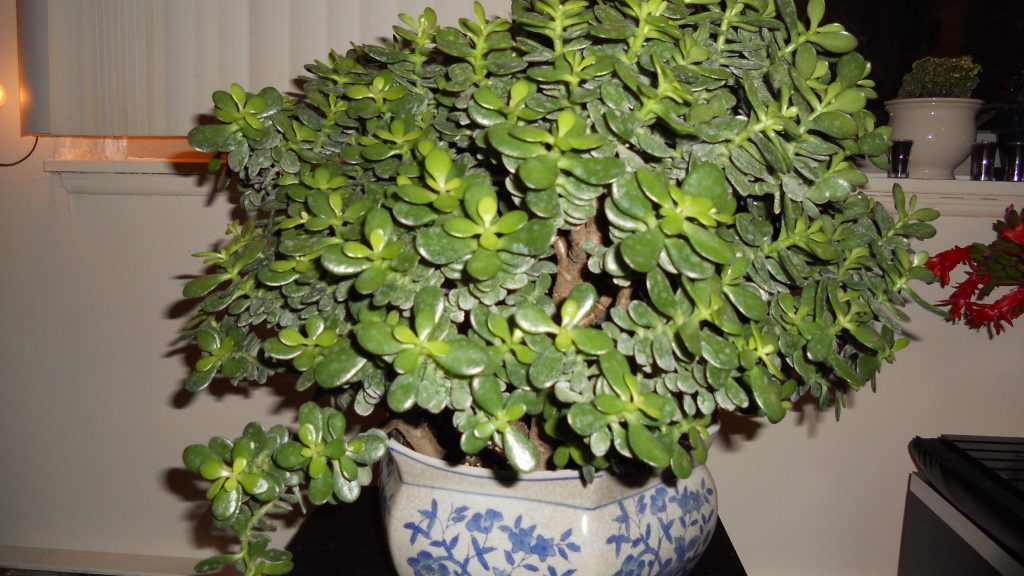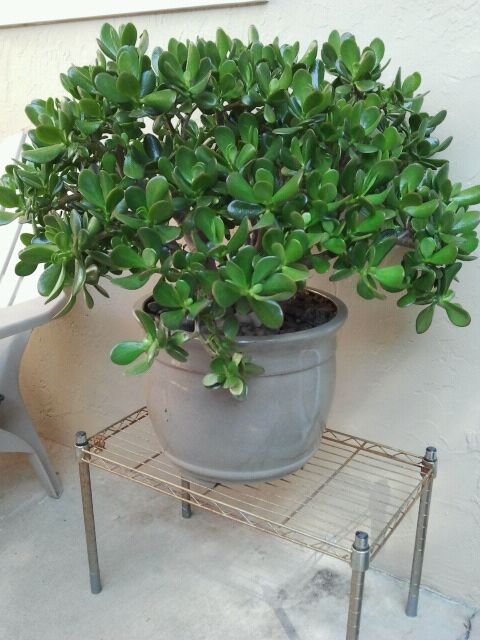The Jade plant is commonly known as Crassula ovata. Lucky plants, money trees, and money plants are succulent plants with small white or pink flowers. It is native to the province of South Africa and commonly as a houseplant worldwide. The jade plant needs little water and can survive in indoor climatic conditions.
This jade plant has sturdy branches, smooth, shiny evergreen trees, which can grow in pairs along the branches. The leaves are dark green, but some can also be yellow-green. In strong sunlight, the edge of the leaves of some varieties can be displayed in red. The new buds on the stem have the same color and texture as the leaves turn into woody brown with age.

Jade plants are also known for their ease of propagation, which can be achieved through cuttings and even leaves falling from the plant. The Jade plants can be easily propagated and their success rate is higher than cuttings. Propagation is the main breeding method for Jade plants. The branches of wild Jade often fall off and these branches can take root and grow into new plants.
How often to water jade plants?
Improve growth of the jade plant maintains the watering schedule. Keep the jade plant in a clay pot and water every 10 to 14 days. In plastic pot water the jade plant about every 2-3 weeks.
They don’t like to seat in wet or moist soil. So the succulent of jade plants holds the water in their leaves. While watering, water it thoroughly and excess water should be well-drained. Don’t water again before the mix dries completely.
Here are the few factors to consider while watering the jade plant
- Soil
- Light
- Temperature and
- Fertilizer
Which type of soil is used for a potting mix for the jade plant?
Remember, the roots of succulents need to dry quickly.
Ordinary potting soil is usually sufficient, but it will stay moist for a long time.
If you use succulent, well-draining soil, you may need to water more than ordinary potting soil.
You can also use quick-drying mixtures or modify conventional potting soil with inorganic substances such as perlite and pumice to increase drainage.
I found that a mixture of sandy loam, organic matter, and peat provides good growth conditions. Play with potting soil and get high-quality succulent soil.
If you planted your jade plant in an outdoor flowerpot, please water it every 10-14 days. The leaves should be thick. When the leaves are white and wrinkled, it is time to water them. Listen to your plants.
What did he say? No Before deciding to plant Crassula ovata plants in a new container, remember that they like to hang slightly from the roots.
Make sure that the pot has drainage holes. Put enough drainage material in the bottom of the container. This will help to drain the excess water from the root. Overwatering can cause root rot.
The jade plants are grown indoors as indoor plants also require well-drained soil. The most important rule applies when watering indoors, don’t water too much. If you water the jade every 2-3 weeks, the plants will get better. Plants are strong and resilient. The main reason for your failure indoors is root rot. Excess water can cause rotten roots!
How much the jade plant requires sunlight?
With direct sunlight, your jade plant can survive?
Yes, it is! If you allow your jade plant to sunlight for four hours every day then it will grow strong and thick.
I suggest placing the jade plant next to the south-facing window so that it can get enough daylight but not too much sunlight. If you still need sunlight, you can consider a grow light.
You may not be wonder about your jade plant become taller.
If the high amount of sunlight receives by the jade plant can be critical for its survival.
As an outcome, the jade plant tends to stretch out when it does not receive enough light.
Be careful about the plant while the leaves and stems are full of water.
This plant is very sensitive, if sunburns the leaves of the jade plant can turn yellow and brown. So the severe sunburn can be fatal to the jade plant.
As the Temperature Change, How often to water the jade plant?
Jade plants can withstand a variety of temperatures, except for freezing temperatures. It works best at day temperatures of 65 to 75 degrees Fahrenheit (18 to 24 degrees Celsius) and night temperatures of 50 to 55 degrees Fahrenheit (10 to 13 degrees Celsius).
The temperature in winter usually drops, which will kill your Jade plants. If possible, take the plants home and water them once or twice a month.
High temperature, dry air, and colder temperature will change the amount and frequency of watering.
You’re not picky about temperature, but never let the temperature drop below 50 degrees Fahrenheit.
High temperature and dry air will dry the potting soil. The lower temperature keeps the soil moisture longer.
Also, note that your jade plant will sleep in winter. Water only when the leaves are drooping or wrinkled.
Also Read: 9 Best Black Succulents those are Incredibly Beautiful
Location
If your home is not too humid, jade plants will dry out quickly. You may need to water it every 5 to 7 days. If you live in a humid area, you may only need to water it every two weeks or less.
If you think your jade plants are more suitable for higher humidity, I suggest you spray the leaves in the morning so that they can dry before the cool night.
Fertilizers
I use balanced water-soluble fertilizer with that you can fertilize your jade plant in spring and summer growing seasons. Don’t fertilize in the winter season.
It is best to give organic fertilizer to jade plants in an appropriate amount every six months.
Use liquid fertilizers which are designed from cactus or succulent plants, because it has less nitrogen than regular houseplant fertilizer.
Only fertilize the soil when the soil is wet because dry soil will damage the plants and excessive fertilization will produce salt. Overfertilization in the ground, you can also burn jade plants.
We recently tested this pre-formulated fertilizer with a slow release rate. We think this is great because you don’t have to think about quantity and time.
Add succulent fertilizer for plants and booms then fertilizer will work automatically.
How much and how do you water jade succulent?
- Water your succulent rigorously and permit excess water to drain out through the hole.
- Place the pot in a plastic container.
- Fill the container with filtered or distilled water.
- Permit the potting mix to thread up the water.
- If the plant stops wicking water then dump the excess water in the pot to drain.
- Keep the grow pot in the existing space.
If you cannot choose bottom-up watering, water the plants slowly along the soil line. Try to drain water from the stem.
Be careful not to sprinkle water on the leaves, as this will promote decay. Excessive water jade plants or any succulents must never stand in the water.
Also Read: Lavender Farming Guide: How to Grow Lavender with Maximum Productivity?
Underwatering jade plant
It is better but a little thirsty and never permits the potting soil of your jade plant to dry out completely.
If the plants are dried out or under watered then the leaves of the plant must be wrinkled, limp, and start to drop off and the remaining may grow with brown spots.
Roots begin to dry out and it will take time to recover.
What can you do with the jade plant?
Water the plants gently to allow the potting soil to absorb some water.
Soaking and pouring the potting soil will only cause the problem like edema.
Overwatered the jade plant
Watering the jade too much will cause the branches to become elastic and fall off. The leaves become moist and soft, the roots may begin to rot.
Consider growing plants in the water for a long period. Use fresh potting soil when transplanting. After transplanting the plants, stop watering for about a week then pour the water thoroughly.
Let the soil dry completely before watering again. Do not fertilize for at least four weeks after transplanting.
If a diseased root of jade is found, cut off some healthy leaves or stems for propagation after transplanting. If your mature plants cannot survive, this will ensure that you have alternative plants.

